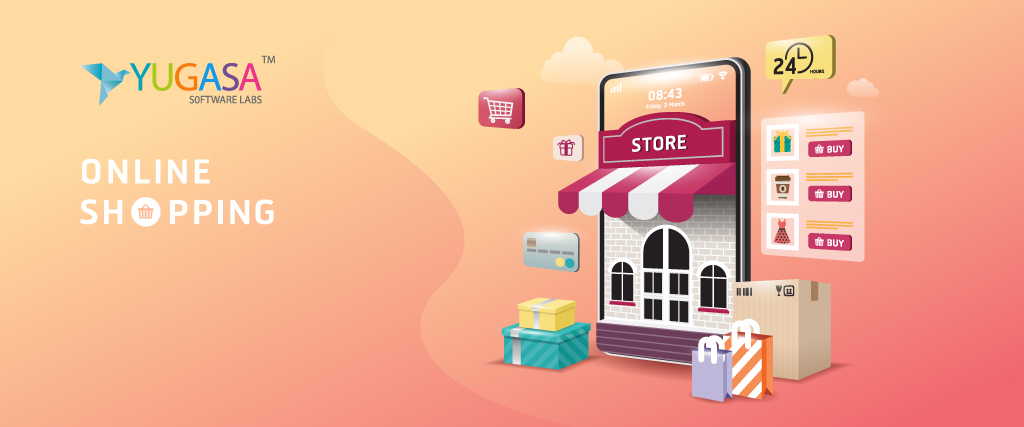E-commerce App: A famous brand of apparel known for its indigenous jeans had all that was going for it. They had built strong brand equity very carefully as against their global competitors. Not so long ago it had a premium price tag for its most-selling product. But then the war between the big online marketplaces came along and the discounts were thrown at customers.
Demand rose but margins decreased, revenues rose but profitability decreased. And the worst of all mark equity has been devalued. There are many examples of this kind that come to mind. E-commerce has undoubtedly transformed the way that business is done in India.
Today the online channel cannot be ignored by any brand worth their weight in the market. IBEF India figures state that by 2026 the Indian e-commerce market is expected to grow to US$ 200 billion. India’s e-commerce is growing 51 percent annually, the world’s highest.
And it must recognize the space ‘s big daddies. As a consumer, you have to confess that without those marketplaces you can’t imagine your life, but as a brand manager, there’s another story to tell.
If you sell on an online marketplace, let me break this with you, you ‘re pretty much competing on price. This works well if you have a cost advantage against your competitors, that is if you buy massive quantities of resources and save on the purchase costs. But once you start to compete on price, your brand is always tied to it. To maintain your competitive advantage, your business costs must be kept to minimal levels.
If you’re not the first mover in this field, your brand shouldn’t be competing on price because you’d be entering a competitive landscape with Walmart as their king. Walmart has created an empire of being the “cheapest,” they have the capital and margins to beat its competitors out of the arena each time.
Compete on Value – E-commerce App
Marketplaces have no room for brands to exhibit value against the other 100 brands offering a similar product. End-users pick the easy comparison, which is the price, in this crowded space to avoid confusion and make decisions quicker. So, if you have a marketplace-only presence and think that’s enough to grow your online sales, think over again.
That way you could limit yourself. Marketplaces allow many people to sell their goods side by side, while e-commerce platforms are usually storefronts that only sell their goods to people.
There are many benefits to having your own e-commerce platform over a marketplace. Wondering exactly what they are? Read on to know more.
Downsides of Selling on a Marketplace
In principle, a marketplace is a rented place where you sell your products and services. Some of the marketplace downsides of selling are:
1. Reduced Profit Margins – E-commerce App

This is one of the great differences between the e-commerce and marketplace platform. Marketplaces tend to set a value for money for your products. Plus, you’ll need to split and share income with them. This may not align with your targets for revenue and profit. On top of that, your payments are sometimes delayed while marketplaces and customers take advantage of transactions long before you do, and you end up waiting. Marketplaces also launch private labels at comparatively lower prices than their comparable competitors.
Flipkart just launched its own private label for electronic appliances this festive season, MarQ, and claimed to be cheaper than its competitors. And once you’ve decided to indulge the likes of Amazon and Flipkart (now under Walmart) in a price war, who have a huge cost advantage, you’re doomed to lose.
2. Excessive Volatility
Marketplaces can bring significant changes to their business model or even a massive focus shift. That can hurt your revenue significantly. For any random reason, they can also terminate your partnership, leaving you with negligible action for recourse.
In addition, marketplaces can introduce a new algorithm on their website or search engine, with the result that their flagship products can be displayed at the top. Users naturally develop a sense of confidence towards labeled or flagship products after a while.
In addition, other vendors can sell counterfeit products on the marketplace, which will hurt your credibility terribly and diminish the confidence of the users in your brand. It can also dissuade buyers from market place transactions.
That hurts you, of course, because it is the only online platform on which you rely on online sales. Volatility hurts your brand irrespective of whether or not the marketplace is indiscretion.
3. No Customer Insights – E-commerce App
Because of the massive digital transformation that is happening globally, you identified a need to sell online. Fantastic! Then why do you give up the most important ingredient that your brand really needs to make a dent in the digital world? Customer insights are extremely important to scale up businesses. Unfortunately, even if you are responsible for bringing those customers to their platform, marketplaces don’t give you access to consumer data.
That is hurting your growth online. Even if you get to enjoy the heavy traffic to your product, by studying the insights for each product you don’t know where it comes from, or use it to your advantage. This is an extremely serious disadvantage!
Other downsides of market selling alone include lack of brand loyalty and identity, inadequate sales reporting, and overall cannibalization of sales, in addition to those three.
Read More:
- MAGENTO VS WOOCOMMERCE VS SHOPIFY VS OPENCART: BEST E-COMMERCE PLATFORMS 2020
- 6 VITAL FACTORS FOR A STARTUP E-COMMERCE BUSINESS SUCCESS
What is the Solution? Build your own Website for e-commerce brand!

You have to! Selling on your own website is a pivotal step in the right direction to boost your online revenue, scale up your business, and purchase customers for a lifetime. It might require some investment upfront, both in the form of money and time, but the advantages of an e-commerce platform are huge.
E-commerce App – Top 5 benefits of selling on your own website:
1. Better Profit Margins
Even if your brand has an online presence, the e-commerce website for your own brand will give you more control over your online revenue. This will make the profits you earn on your products even higher as you can charge your own price and sell the purchaser on value rather than on price. In addition, not competing on the same site with other companies allows you to make more sales by suggesting complementary products to purchased items.
Remember your e-commerce sales should be supplemented by your marketplace revenue. That is, rely on your online revenue sales e-commerce website because if need be, you can control it and optimize it. The biggest mistake you can make when creating an online brand presence is handing control over to someone else. Your brand identity, brand message, brand loyalty all suffer in this situation.
2. Look More Professional
A well-designed website that depicts and reiterates the values of your brand and the mission of the company builds confidence in buyers and makes them familiar with your brand. Branding is a visual touchpoint look and feels between a brand and its customers. If it doesn’t show exactly what you stand for as a company, or if it is easily forgotten, your business will suffer. This not only establishes consistency and a seamless transfer between your offline and online stores.
The authenticity and identity of the brand make the buyer more comfortable with buying from you. Your own brand e-commerce website is a great way to tell your brand story and gain life-long, loyal customers.
3. Eliminate Unnecessary Competition
You can (finally) have a platform that will make it easy to convey the value proposition of your product and persuade the buyer to hit the buy button without cutting margins to earn higher profits. In fact, by suggesting users products that will align with their purchasing choices, you can boost your sales.
For instance, a user buys a t-shirt from your online clothing store, you ‘re recommending jeans, accessories, and shoes that might go with their look. Additionally, your suggestions could be customized based on the purchaser’s preference for color, jeans style, age, sex, etc. It’s like turning into their personal stylist. Many e-commerce stores even consider post-buy sales by suggesting buyers things they didn’t buy in a long time.
4. No Listing or Selling Fees – E-commerce App
Marketplaces can charge you three types of fees for selling on their platform — fees per month, fees per sale, and fees per listing. Some marketplaces may charge you all three while others may choose one or two of them. Basically, you need to pay up before making a sale. You have to ask yourself, is your online business profitable despite the numerous fees?
If so, then fantastic! With your own brand e-commerce website, you can make even greater sales. Clearly, customers like your products so why not upsell them? Or design targeted marketing campaigns around various customer segments that you are buying from?
Another cost stressor is the payments you are supposed to receive for sales of your product from marketplaces. While you’ll be waiting to clear your dues, marketplaces like Amazon may already enjoy their profit cut. Read this article from Building Fynder titled “What no one tells you about selling online in India” to read more about hidden fees and lack of profits on the marketplaces.
5. Know Your Customer
This is a vitally important advantage. If you are not yet convinced that you would be developing an e-commerce website, that should be done.
If you are selling on your own website, you get a complete picture of the data of your customers. The second step is to see how important it is to make use of the digital platform by acquiring relevant data about your visitors, prospects, and buyers once you have identified the need to start selling online.
You can increasingly attract, convert, and retain customers by employing various digital marketing strategies and analytical tools. You can measure the activity online and identify what works and what isn’t.
You can run ads on Google, Bing, Facebook, and so on that target keywords to specific population segment so your conversion rate is higher. With specific data you have on them (segments like “preference: denim,” “preference: color red,” etc.)
you can curate the most personalized experience for your buyers. You can create drip email campaigns to keep buyers returning for more. During the festival season, you can run discount marketing campaigns, and target different audience segments. With customer data and insights, the possibility is endless, honestly.
These insights are powerful and will give you a competitive edge against your competitors because you’re going to know exactly how and why buyers make their brand decisions.
Another major advantage of having your own website on the e-commerce website vs marketplace debate is that offline channels are not cannibalized.
Conclusion
There’s no question whether a standalone e-commerce website is the best choice when you’re going to be selling products online for a long time to come. Marketplaces deliver high traffic, and brand recognition to some extent.
However, relying on the e-commerce website of your own brand for online sales and supplementing sales through marketplaces, is important. It goes a long way to building your own brand. If done right, you’ll get loyal customers who are your biggest advocates as well as your biggest recurring source of income.
Go for it, sell at your own website!
If you need help to develop an intuitive design for your e-commerce web app then click the below link to be in touch, we have developed solutions for many clients and have extensive expertise in the field.
























